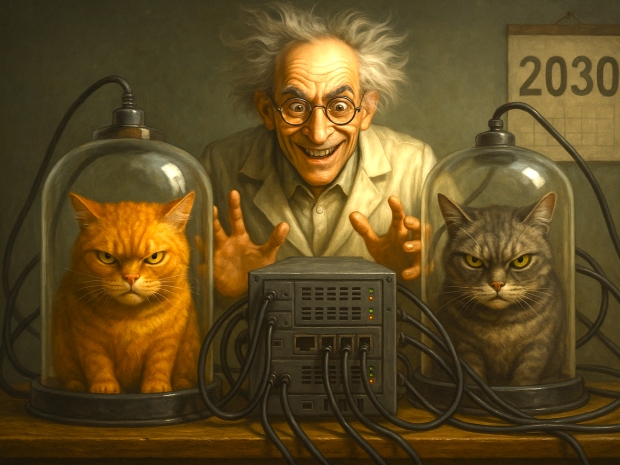The plan could usher in a quantum internet run entirely by potentially dead or alive cats. However, both admitted the networks depend on technologies that do not yet exist and will need universities and federal labs to knock them into shape.
Quantum machines promise to crack physics, chemistry and security problems that would take conventional computers thousands of years. However, they remain error-prone nightmares, and building a dependable model is still a slog for IBM, Alphabet’s Google and the rest. IBM hopes to have an operational machine by 2029.
Cisco opened a lab earlier this year to investigate ways of wiring these chilly contraptions together. The problem starts with IBM’s quantum gear sitting inside huge cryogenic tanks so cold the atoms barely twitch. Biggish Blue's Jay Gambetta told Reuters that the team has to turn information stored in stationary qubits into “flying” qubits that travel as microwaves.
Those flying microwave qubits then need to be converted into optical signals so they can shoot between Cisco’s switches over fibre-optic lines. The gadget that performs this trick, known as a microwave-optical transducer, still has to be developed with help from groups such as the Superconducting Quantum Materials and Systems Centre led by the Fermi National Accelerator Laboratory near Chicago.
IBM and Cisco also plan to release open-source software to stitch the whole system together.
Cisco’s Vijoy Pandey said: “We are looking at this end-to-end as a system ... rather than two discrete road maps”.
He added, “We are solving it jointly, which has a much better chance of this thing going in the same direction”, Pandey said.




